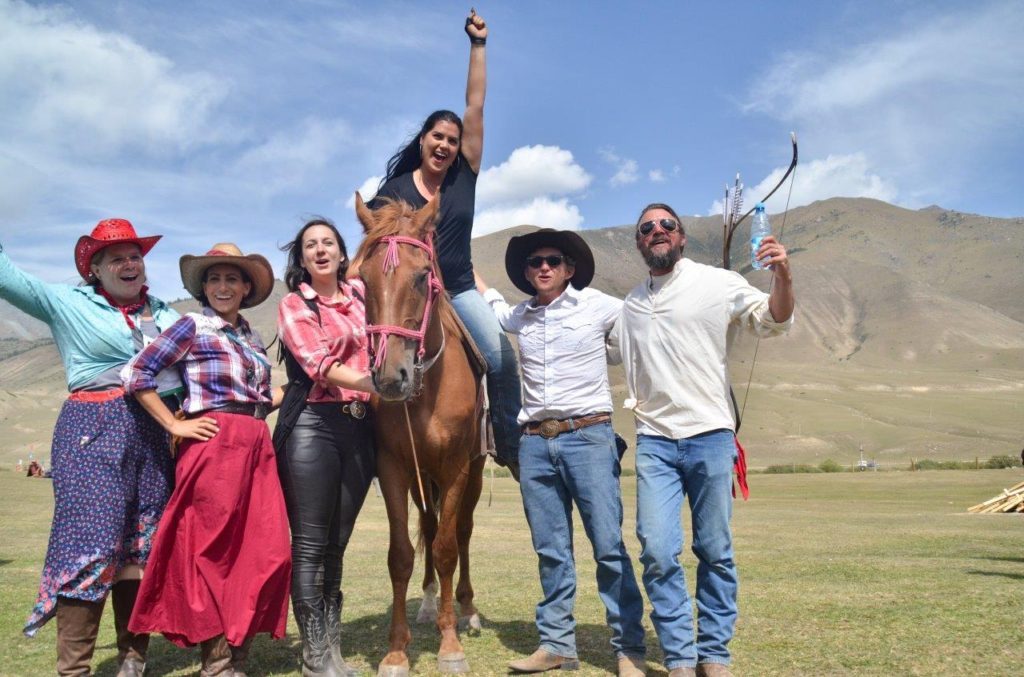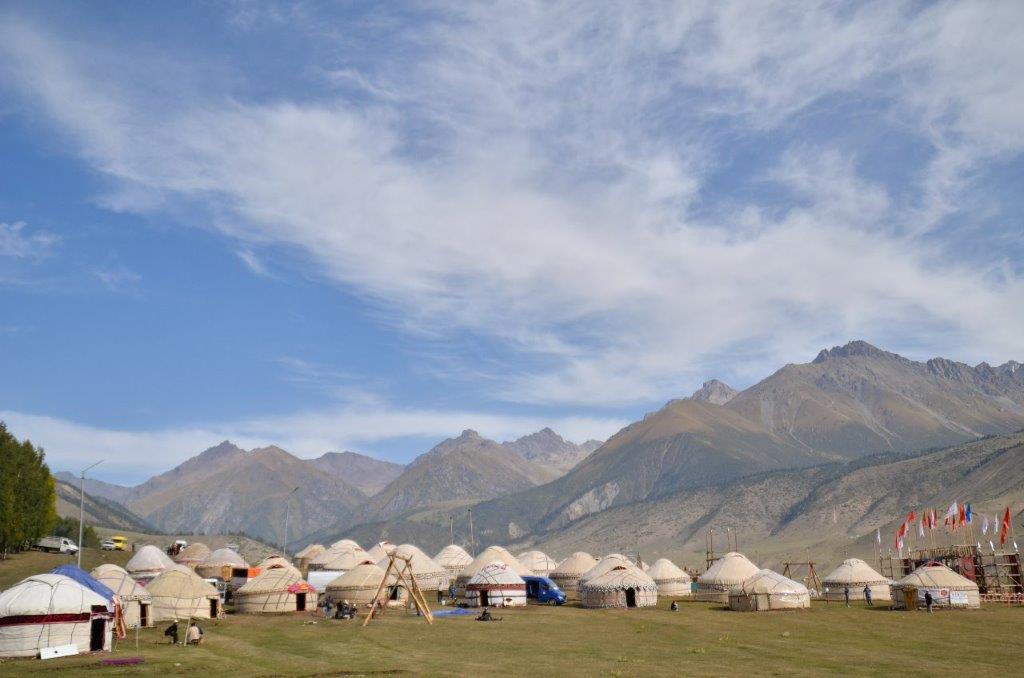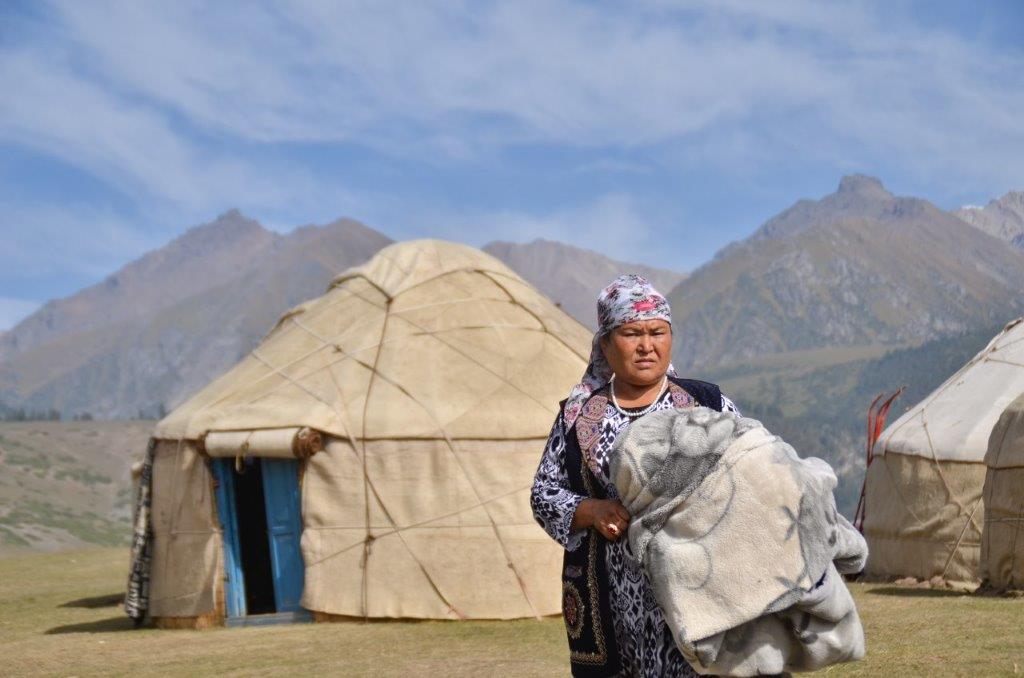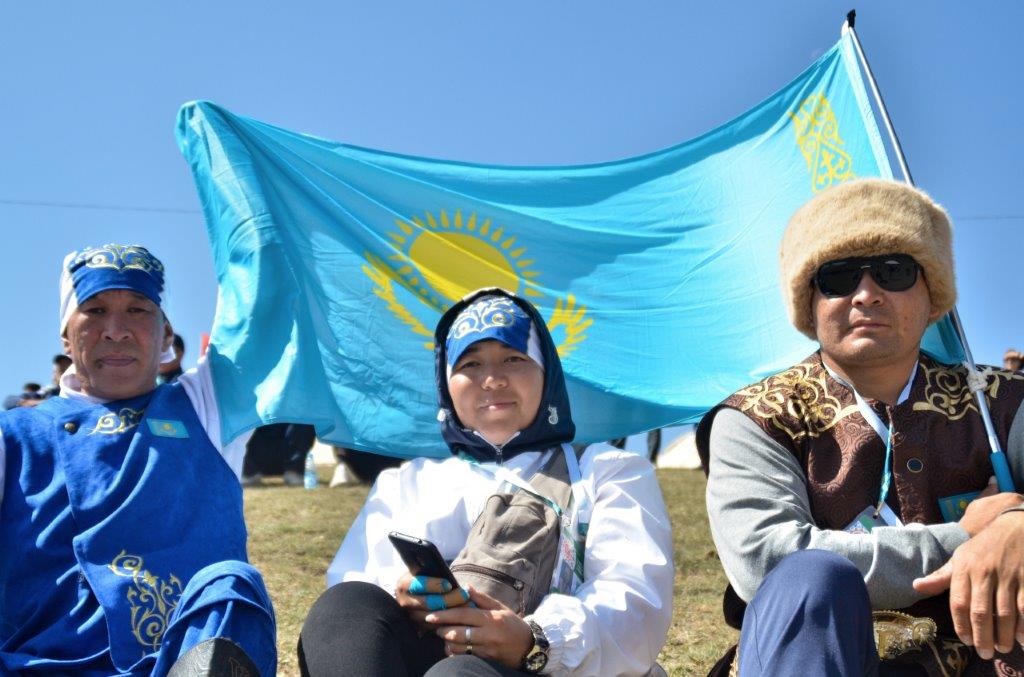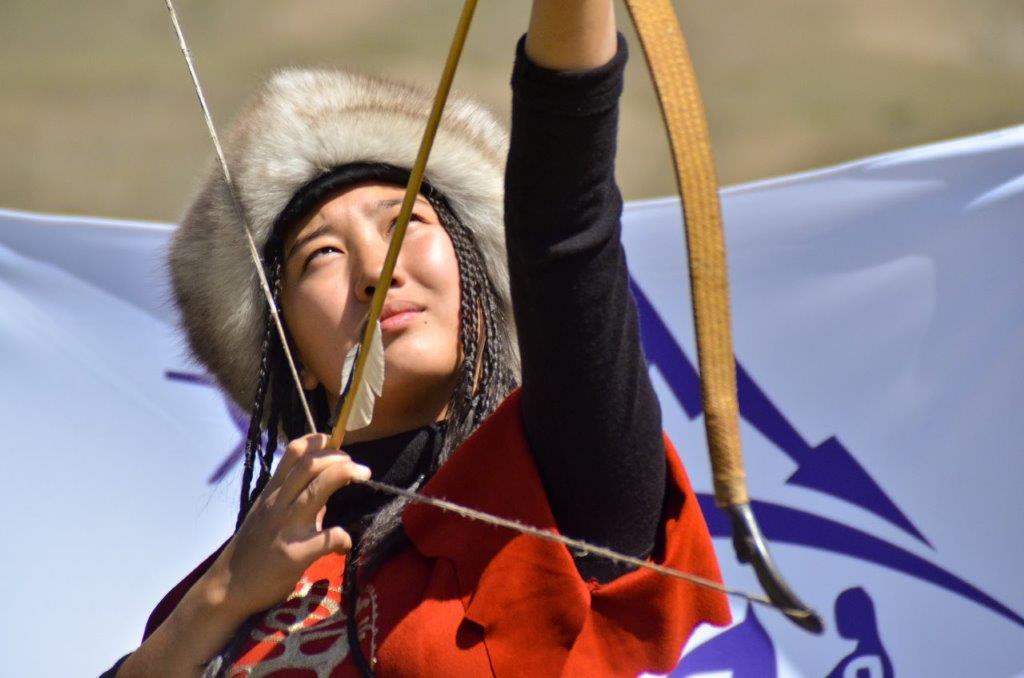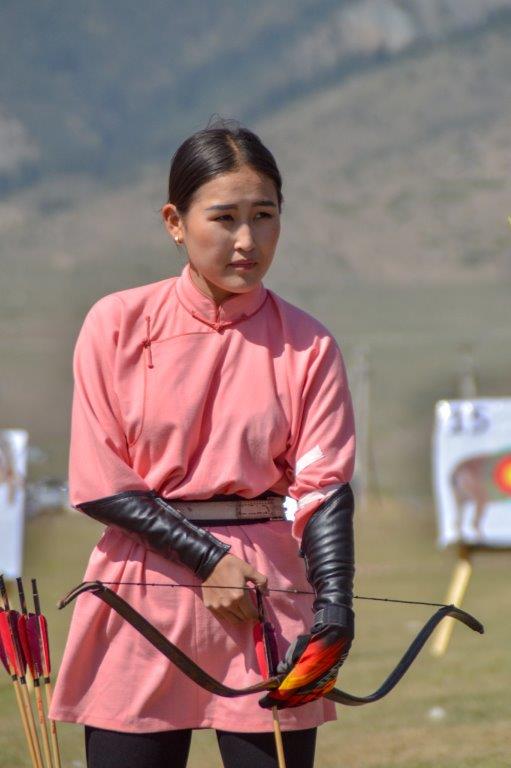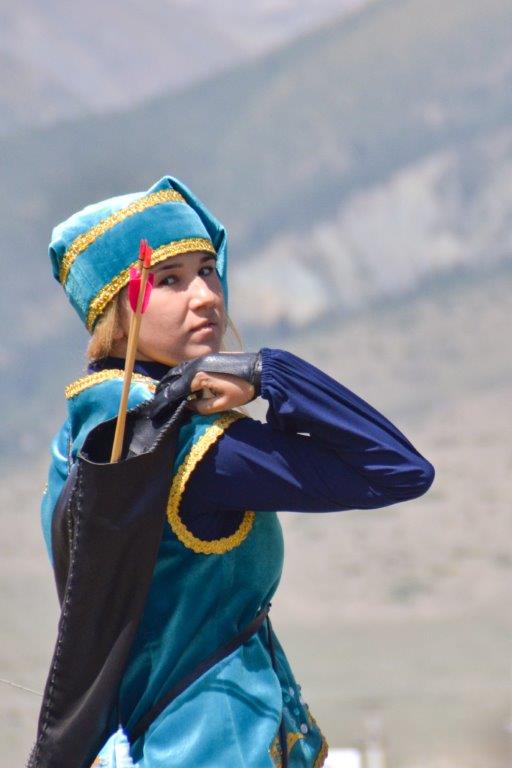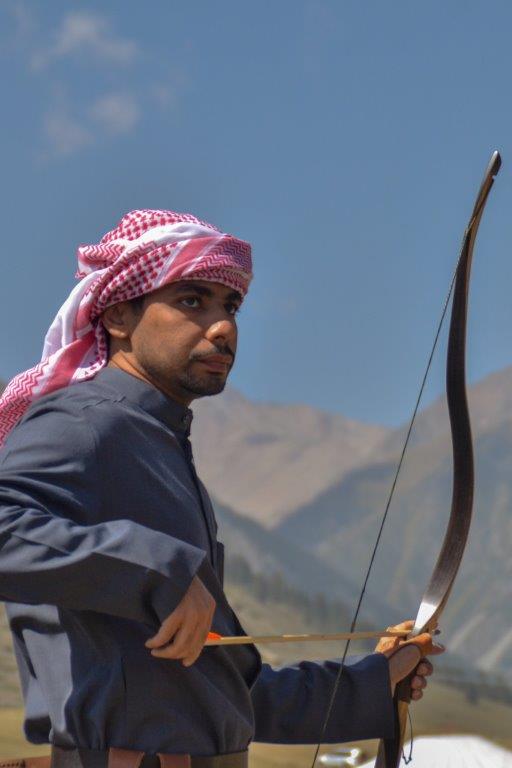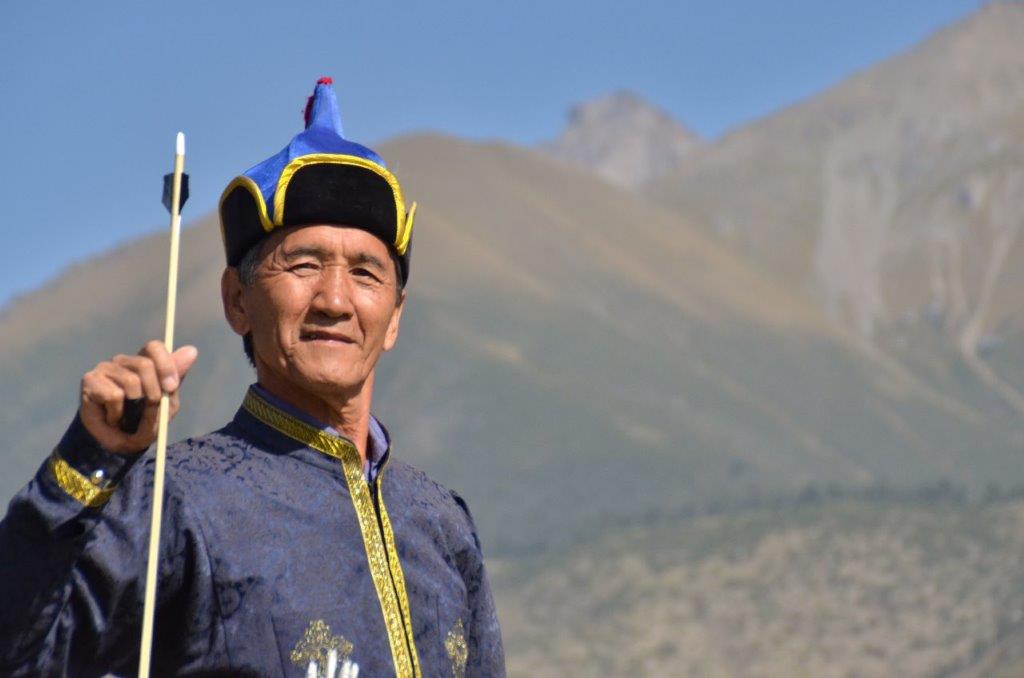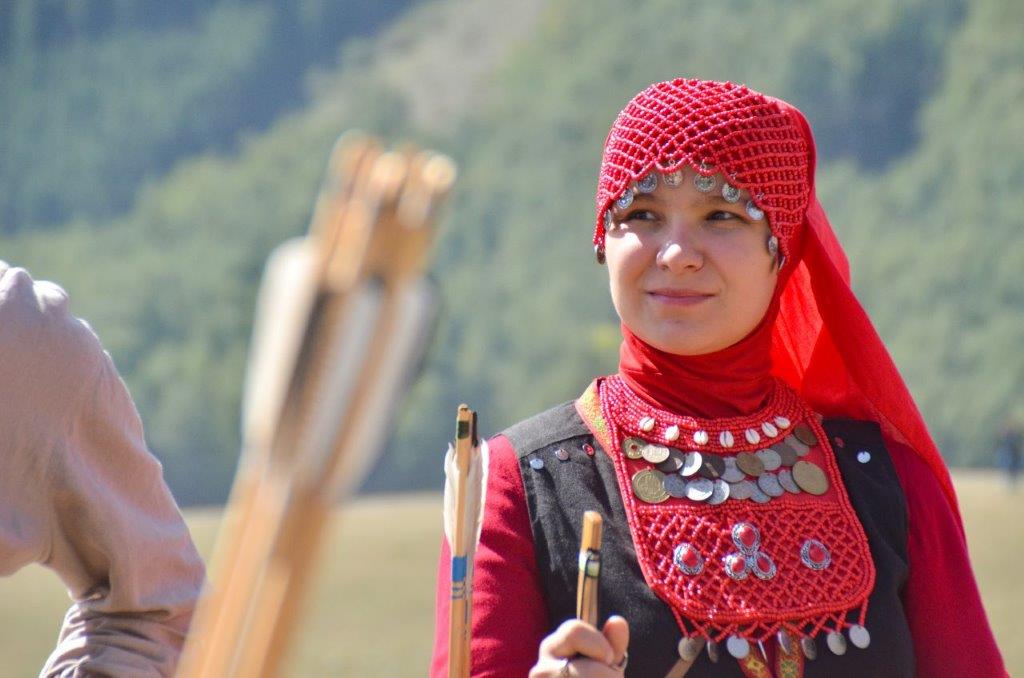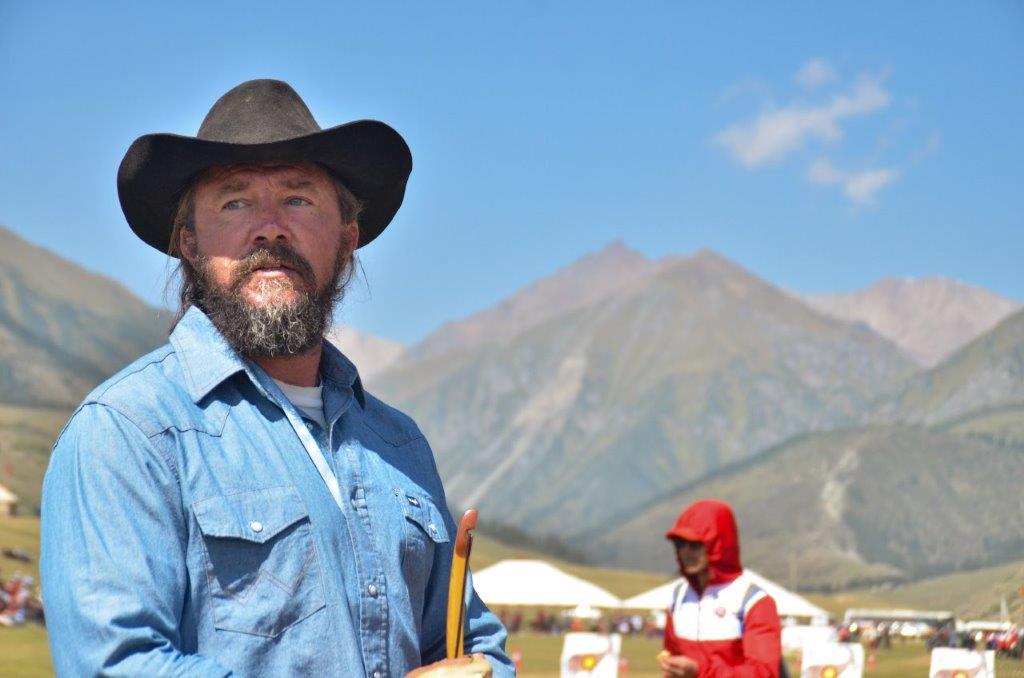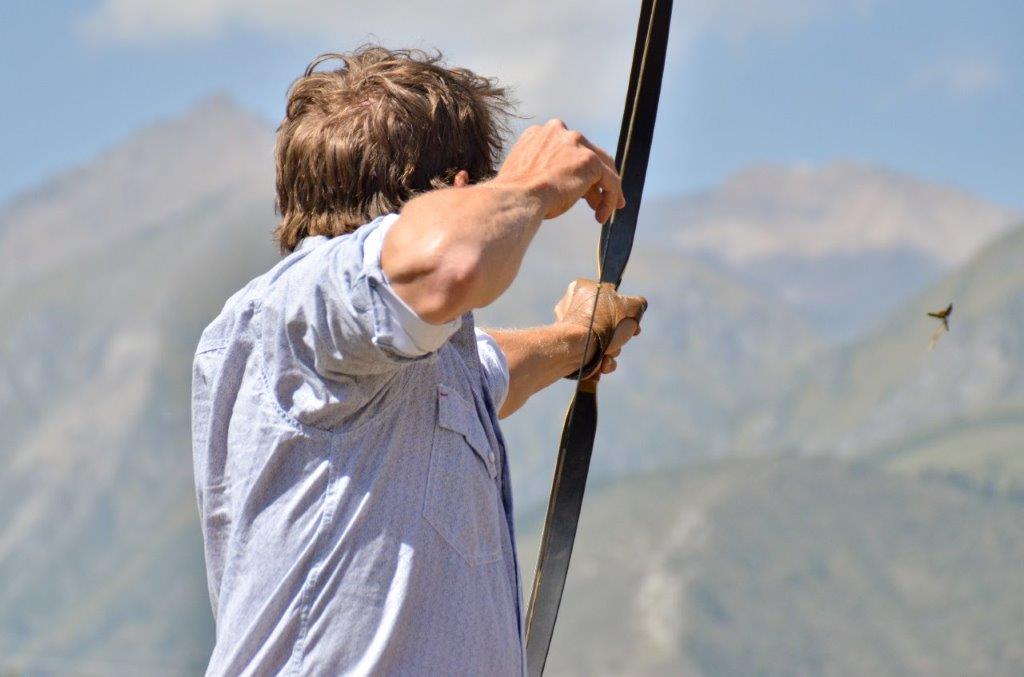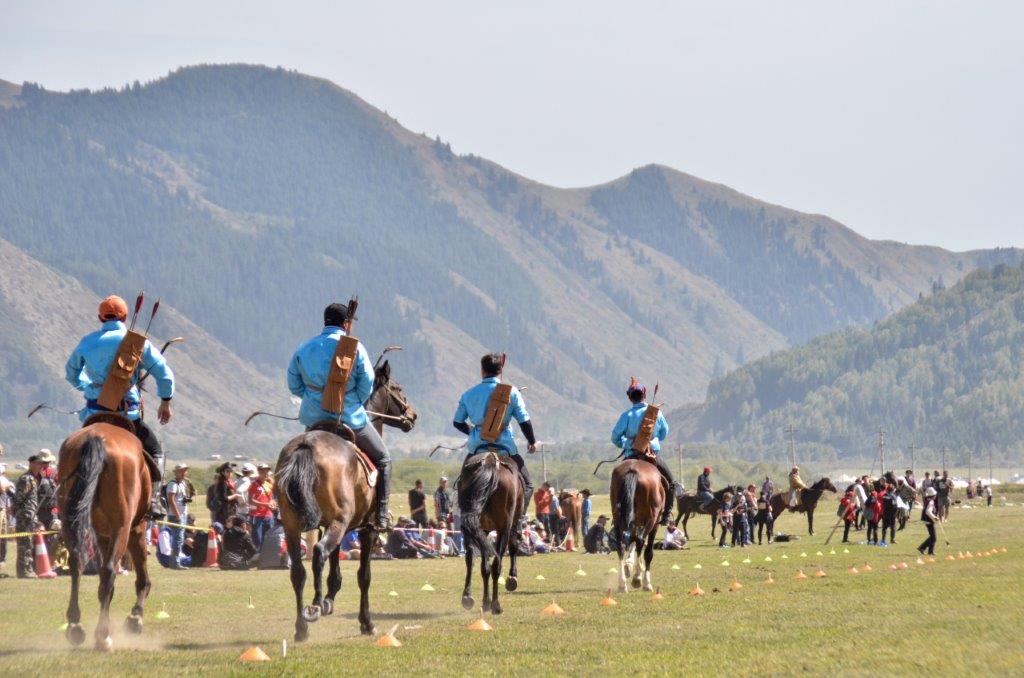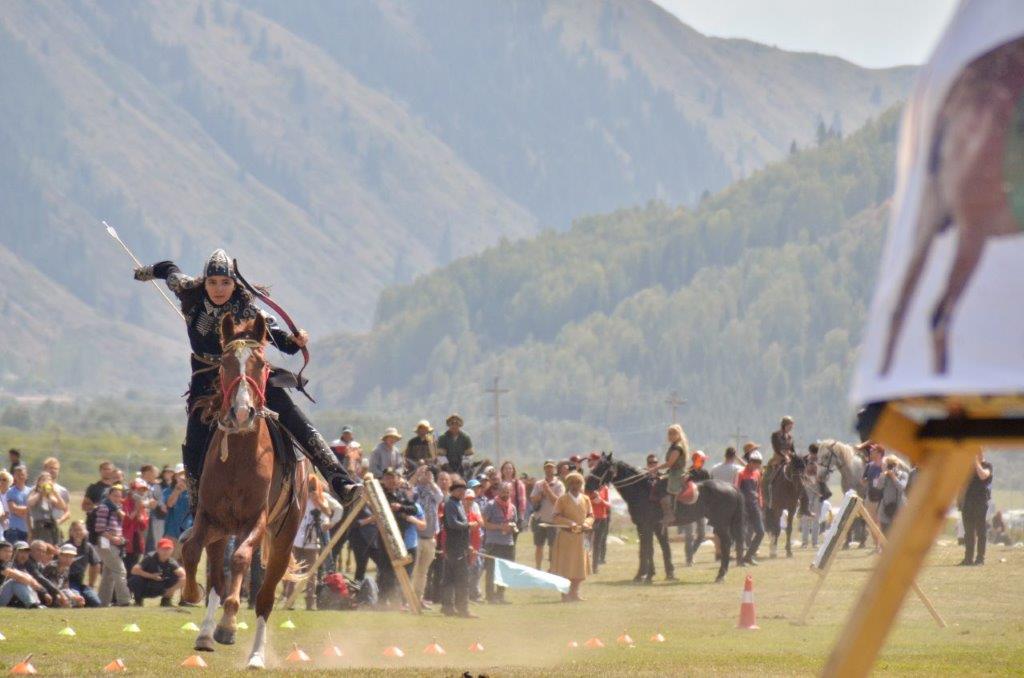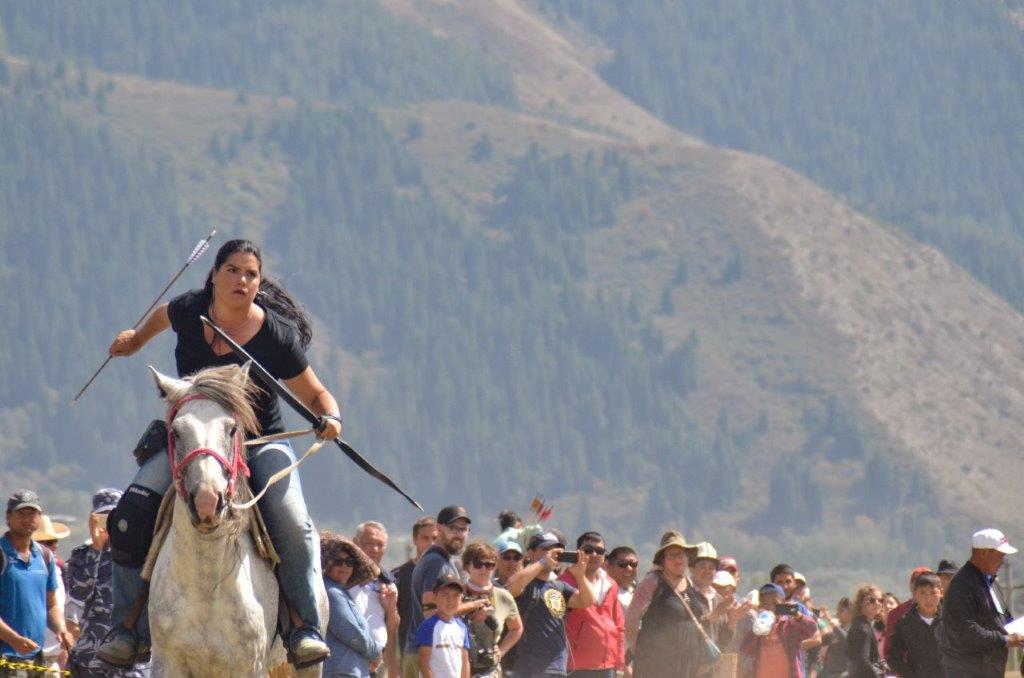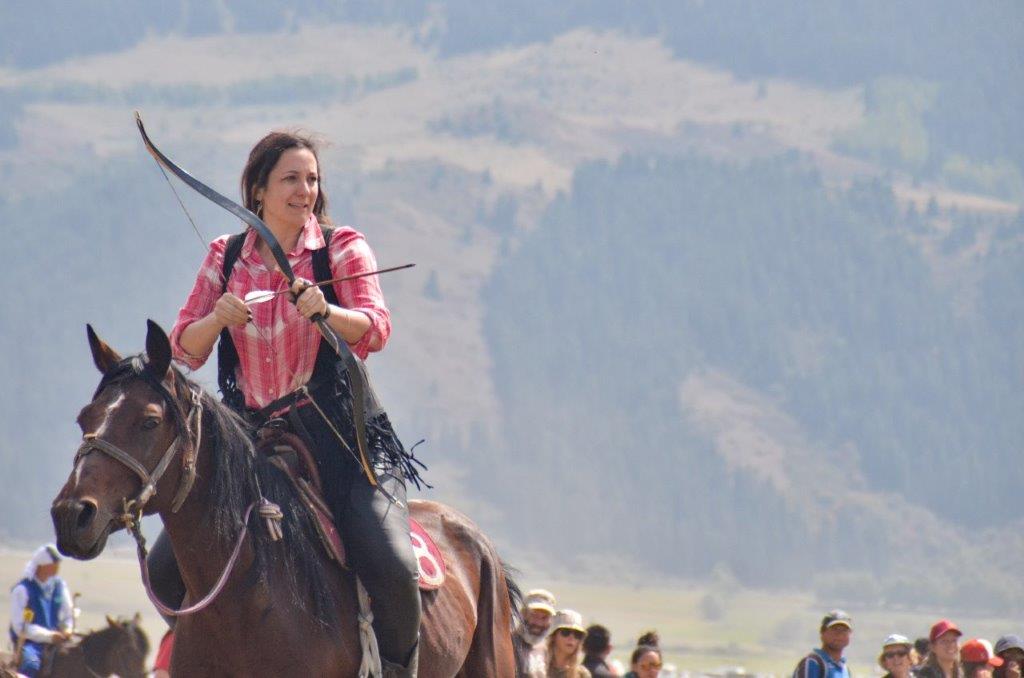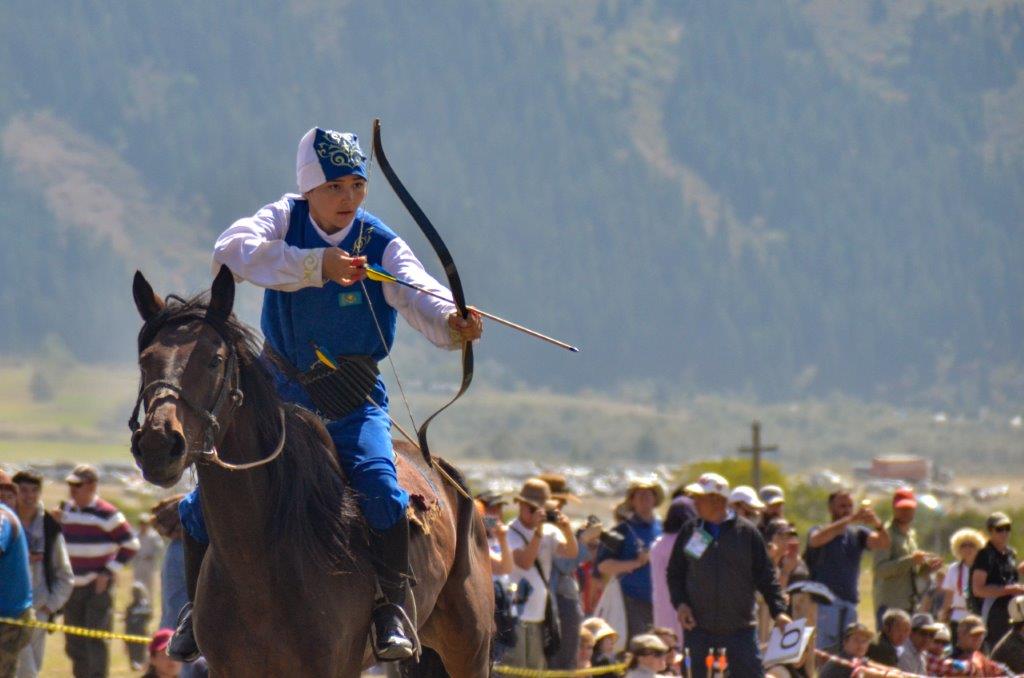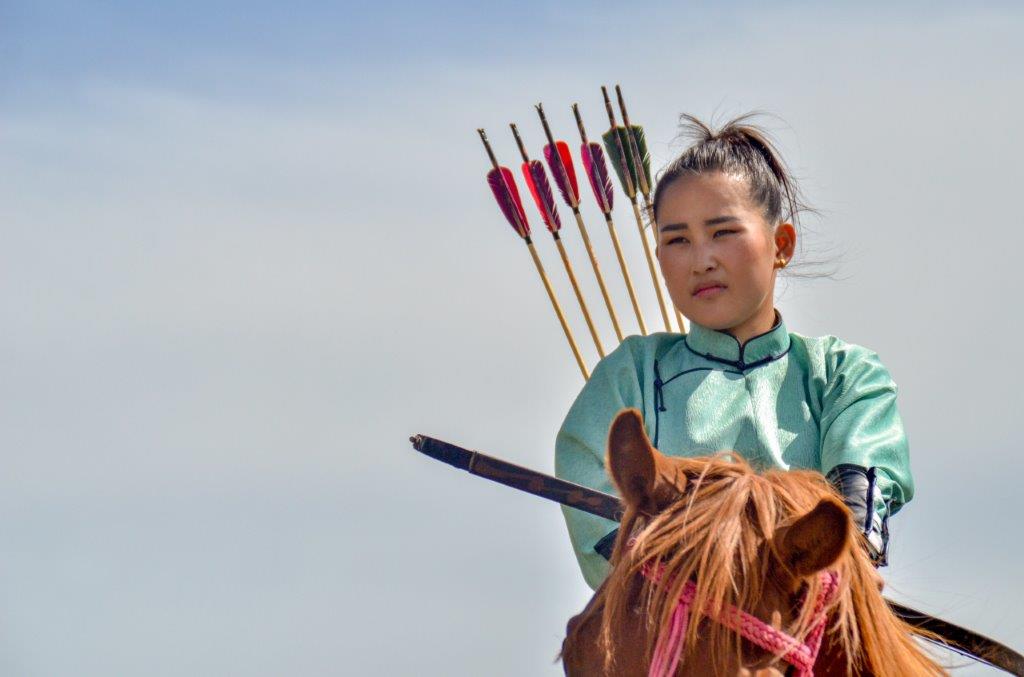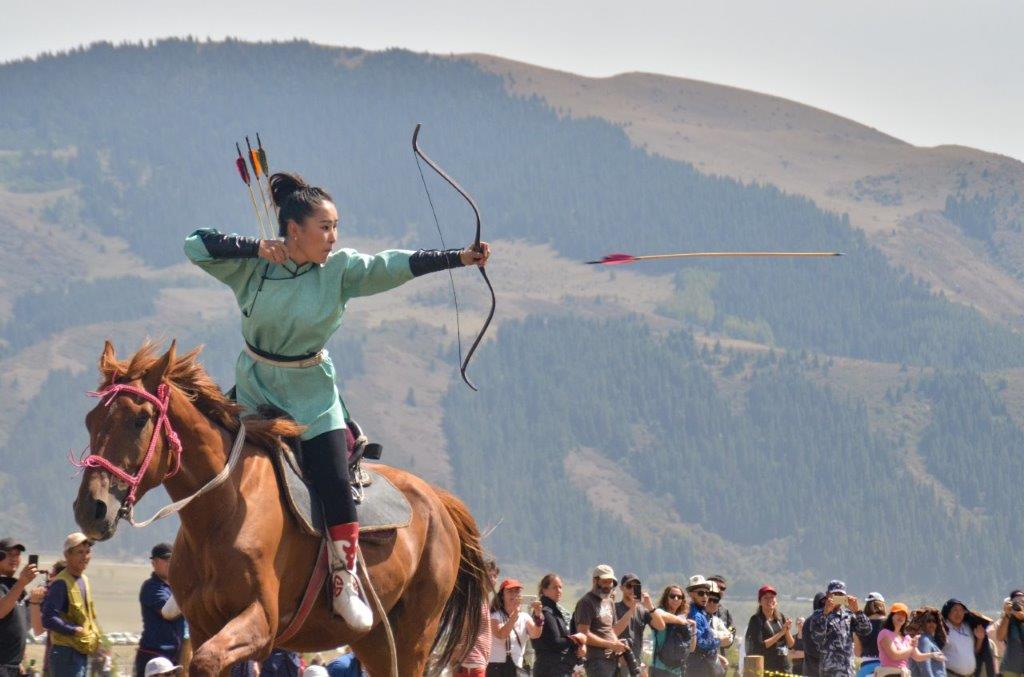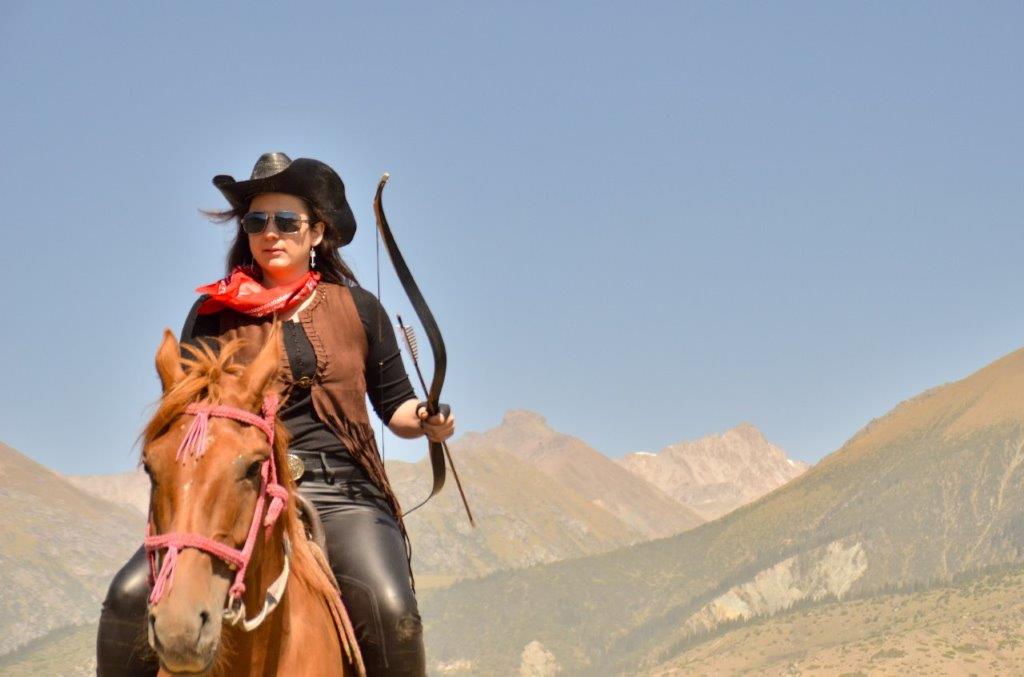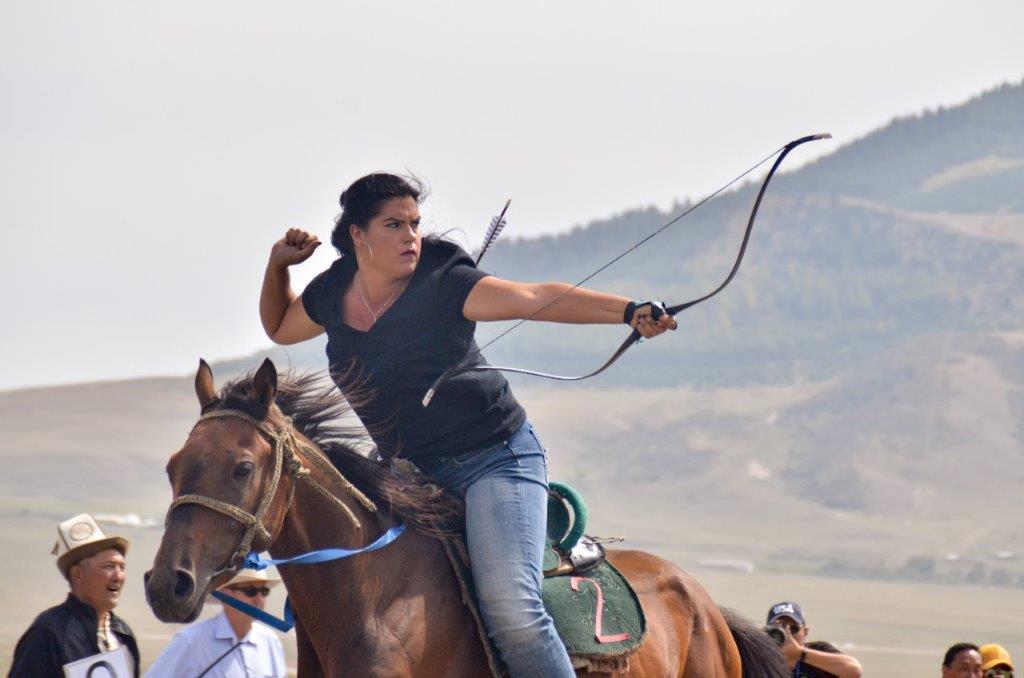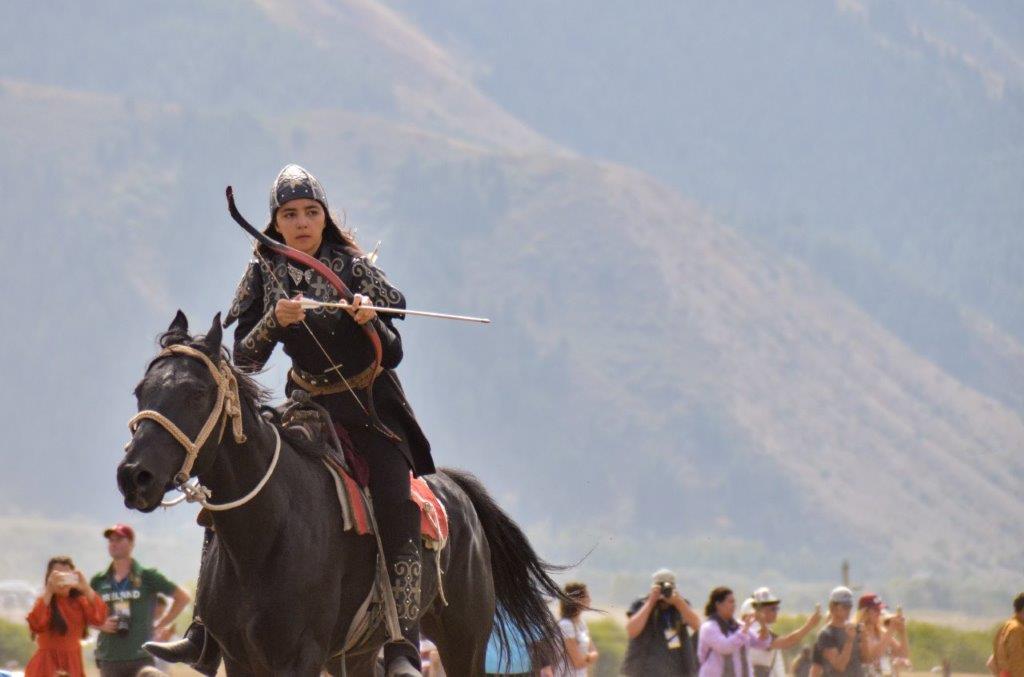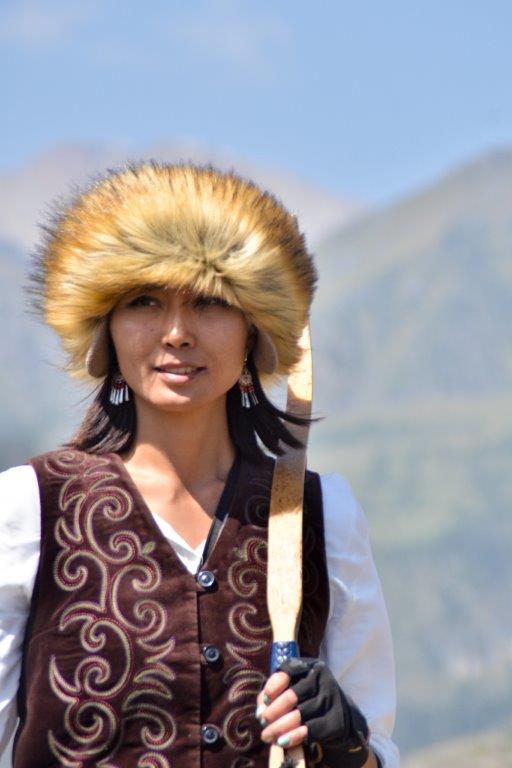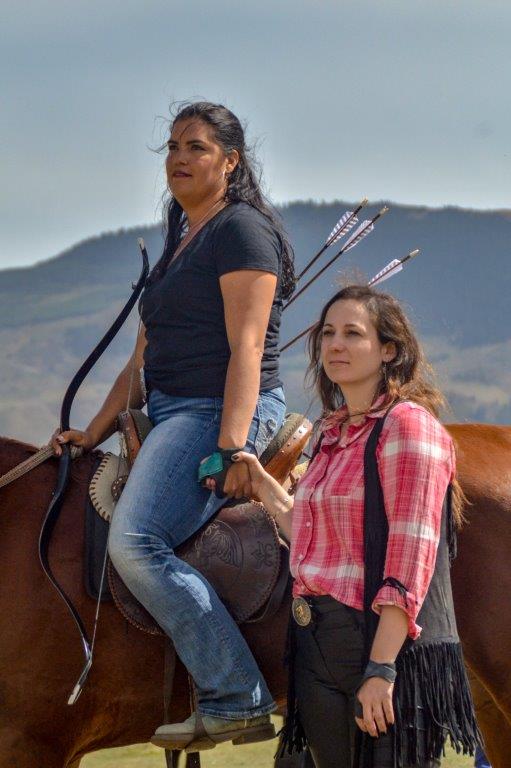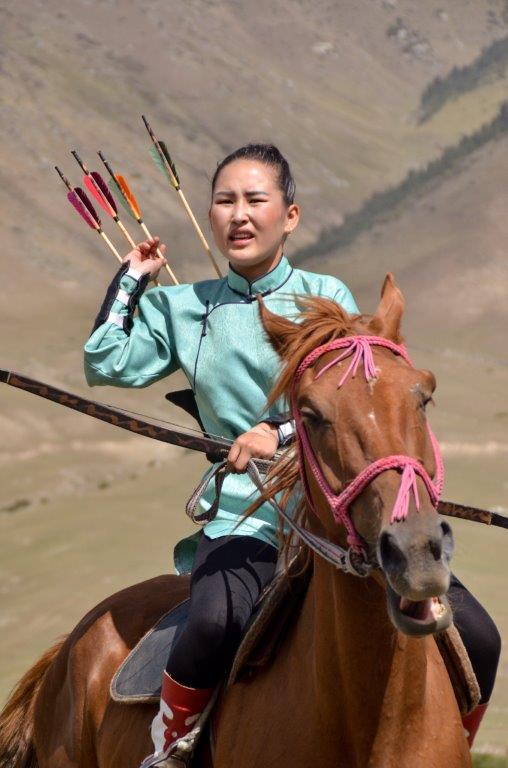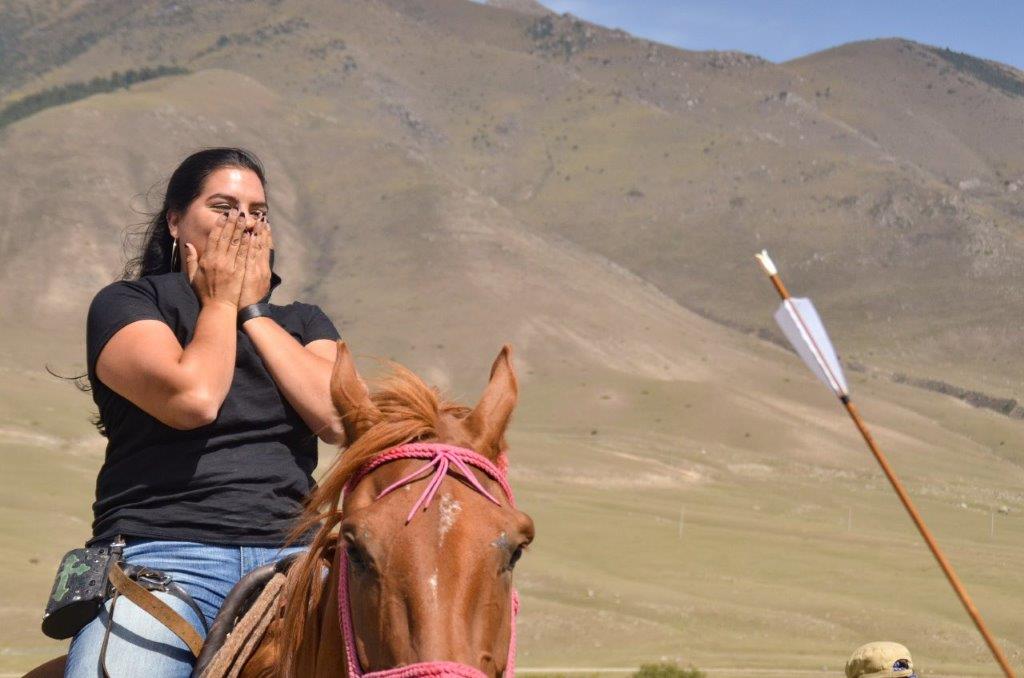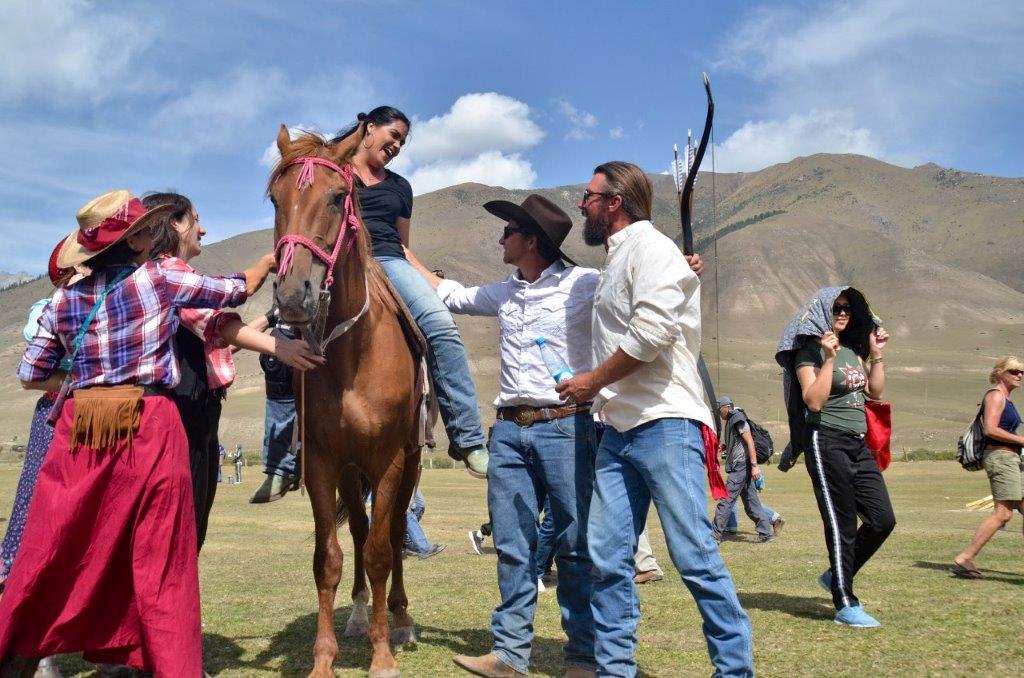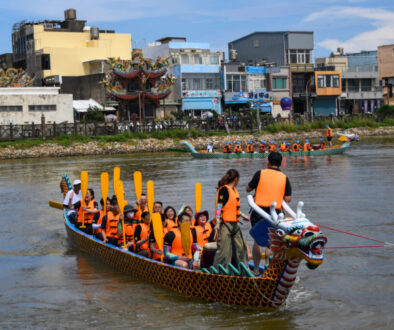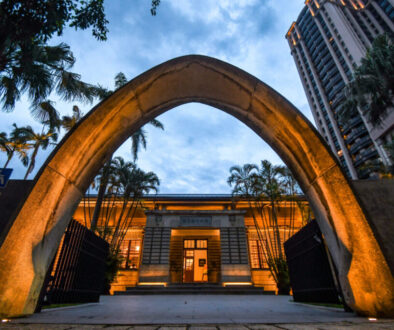American Cowboys in Kyrgyzstan
The Games at Kyrchyn Village
Nestled in the bosom of Kyrchyn Gore is the sprawling yurt camp set up for the World Nomad Games. This is the cultural center for the so-called “Olympics of Central Asia”. Kyrgyz people from around the country all converge on this valley, bringing with them their traditional clothing, food, music, and customs. Other than being dipped head first into a pool of nomadic culture, participants from around the world showcase their own culture is their separate international ordos. Here you can find anything from Native American Tipis to Arab tents, all giving daily performances and demonstrations to the public.
Kyrchyn Village is a festival of colors, breathing new life into Kyrgyz nomadic culture. Anyone from young children to the elderly all partake in wearing the most elaborate of dress and join in impromptu dances among the yurts. Tourists easily find themselves lost in the sheer vibrancy and richness of the culture in the village that they forget that on a nearby hill outside the village is where the real action is held.
Falconry, Archery, and Dogs…Oh My!
The popular tagline of the World Nomad Games is: If Ghenghis Khan was alive, he’d be here. If this was true, then he would definitely be in the valley cheering as different countries compete in some of the most unique and interesting of sports in the world. Hunting dogs are judged on their speed and agility, hawks show off their ability to attack their prey. These events barely scratch the surface of what unusual events the World Nomad Games hold. On the nearby hillside, fans can be seen supporting their country, flag in hand, each person seeing their country’s competitor as a symbol of national pride.
Unlike the events held at the Hippodrome in Cholpon Ata, the games in Kyrchyn Valley created more of the feeling that you are truly stepping back into the time of Ghenghis Khan and his hordes. The games at Cholpon Ata are sure to leave you at the edge of your seat but with high grandstands and arena hot dogs, it is hard to lose yourself in another world. Kyrchyn Valley has a fog wrapped around it which transports all who enters it to a land of green fields, white yurts, and colorful warriors.
You can read more about Kyrgyz hunting dogs, the Taigan, here!
A Living Museum of World Culture
The thudding sound of arrows being lodged into wooden targets was almost hypnotic, attracting spectators from all ends of the valley. The most intriguing element of the archery competition is that every participant must wear the traditional dress of their country. What makes the World Nomad Games so much more stirring is that it is a raw look at people from across the globe, coming together in the name of sportsmanship. Only in Kyrgyzstan, not the Olympics, can one find a smart looking Emirati in his dishdasha competing next a Mongolian in his traditional garb. The traditional clothing is not the only part of the archery competition which gives the games a touch of authenticity, all bows must be made of wood and contain no man-made materials. Unlike all the other events, this is the only place where you can see such a diverse group of people, wearing their national dress, and competing just as they would hundreds of years ago.
You can read more about archery during the World Nomad Games here!
The Americans
One would think among such elaborate colorful clothing, the Americans would blend right into the rows of archers stringing their bows and releasing their arrows. On the contrary, the Americans stuck out like a sore thumb in their denim shirts and cowboy hats. The American Archery team consisted of seven members: Hadley Hudson(captain of the team), Mike Sabo (Pictured on the left), Serena Lyn, Susannah Winfield, Anna Gatti, Rob Morton, and Jennifer Lynn Larsen. These archers are all Central Texan natives who hail from a town which is well known for horse riding as well as, of course, archery. Kyrgyzstan’s World Nomad Games is not their first international archery competition, they have also won silver medals in Seoul for their marksmanship. The American team was also familiar with many of their opponents, the Mongolians, in particular, are a force to be reckoned with. Even with gold medals on the line, the atmosphere was light and spirits were high as archers laughed at themselves for missing targets and patted each other on the backs as the walked the field to retrieve their arrows.
Jenifer Lynn Larsen won fourth place in Women’s Korean Archery. You can check out her website here or here!
Confusion on the Field
As captivating as the World Nomad Games are, there is always a constant sense of confusion and frustration among the participants. Mid-night equipment checks by officials, shady motels, language barriers, and overall lack of organization plague the games. Competitors and their coaches are told at the last minute the location and time of events, and even then it is subject to change. The teenage volunteers work tirelessly attempting to translate between the officials and the teams. It is not until all the participants line up, ready to compete in the archery event when the referees finally explain the rules to the contenders and the crowd. As soon as the rules are explained, many of the archers turn to one another for clarification. Practice rounds were then put into place before the event to ensure each team understood the rules.
You can read more about the US delegation to the World Nomad Games here!
Aiming For the Bullseye
The pinnacle of excitement when watching the archery event has to be seeing the participants, riding at full gallop, shooting at three targets. The men’s and women’s horseback archery competition was originally scheduled to be held on the same day. Due to miscommunication and poor planning, the men’s event went on late into the afternoon thus pushing the women’s competition to the following day. After lessons were learned from the mistakes made during the men’s archery final, the women’s event went relatively smoothly with only a few hiccups.
There were two riders participating from each team, the archers came from countries such as Kyrgyzstan, Kazakhstan, China, Germany, Hungary, Turkey, and the United States. Each of the participants would make fours passes at the targets, the first being counted as a warm-up round. They were then each scored on their accuracy, and points were deducted if they either missed the target or failed to ride at full gallop.
You can read a complete list of the rules here!
Untamed Horses
It is common knowledge that the home field advantage will substantially improve how the native team plays. Imagine not only playing on fimilar territory to increase your odds of winning but also riding horses you’ve ridden and trained with for years, while your competitors are given random horses plucked from a nearby valley. This is exactly what was going through many rider’s minds when they were paired with their horses. As the archer first saddled up, their horse would then veer off the track or even try to buck them off. Most of the time prior to the competition was spent getting to know their horses, rather than actually practicing shooting. The issue with the horses was so severe that one enraged Mongolian participant event kicked over a target in fury. As it eventually became clear that this problem has to be promptly dealt with, referees then agreed on rotating the horses. This decision seemed to satisfy most of the competitors.
The Battle for the Silver Medal
As the competition began to pick up its pace, the final was down two four archers: a Mongolian, Turk, Kyrgyz, and an American. Each participant was huddled around by their teammates and trainers, all giving the finalist last-minute coaching and tips. Although skilled, many archers and fans were a bit skeptical on the reasons the Kyrgyz representative made it into the finals. Some guessed that it may be an unspoken bias the officials have towards their compatriots. The competitors then refilled their quiver, climbed onto their horses and rode full speed onto the course. Tensions were high as the determined riders quickly released their arrow and almost like clockwork retrieved another from their back. Their arrow was still whizzing through the air as the women instinctively lined up their next shot.
After each of the archers trotted back to the starting line, it was announced on the muffled loudspeaker that the Turkish woman had taken the gold medal. The silver, however, was still up for grabs pitting the Mongolian and the American against each other. The American team desperately tried to persuade the officials to let them use a more tame horse, but their request fell upon deaf ears. The nail-biting last few rides of the two archers left the teams and spectators all at the edge of their seats. The faces of the two riders had a look of pure determination and concentration as they let their arrows fly. All that was left as they rode off into the distance was the falling hunks off dirt kicked up by their steeds.
You can read more about Serena here!
Team USA
The horses swiftly took the riders to rejoin their teammates as the final score was tallied. One of the teenage volunteers ran up to Serena, the American finalist, and excitedly grabbed her hand. “You got third place!” Serena then began cheering and cried tears of joy as her teammates, volunteers, and other players encircled her to extend their congratulations. Although the archers, from Turkey and Mongolia, clinched the gold and silver medals, no one on the field was as surprised and euphoric as the American team.
Serena’s accomplishment brought the total medal count for the American’s during the World Nomad Games up to three. These games mean so much more than a simple medal. These competitions bring together athletes from around the world to compete in some of the most beautiful landscapes imaginable. The traditional clothing, hand-crafted bows, sense of adventure, and sportsmanship is something the Olympics could only dream of mimicking.
You can take a look at the final medal count here!

